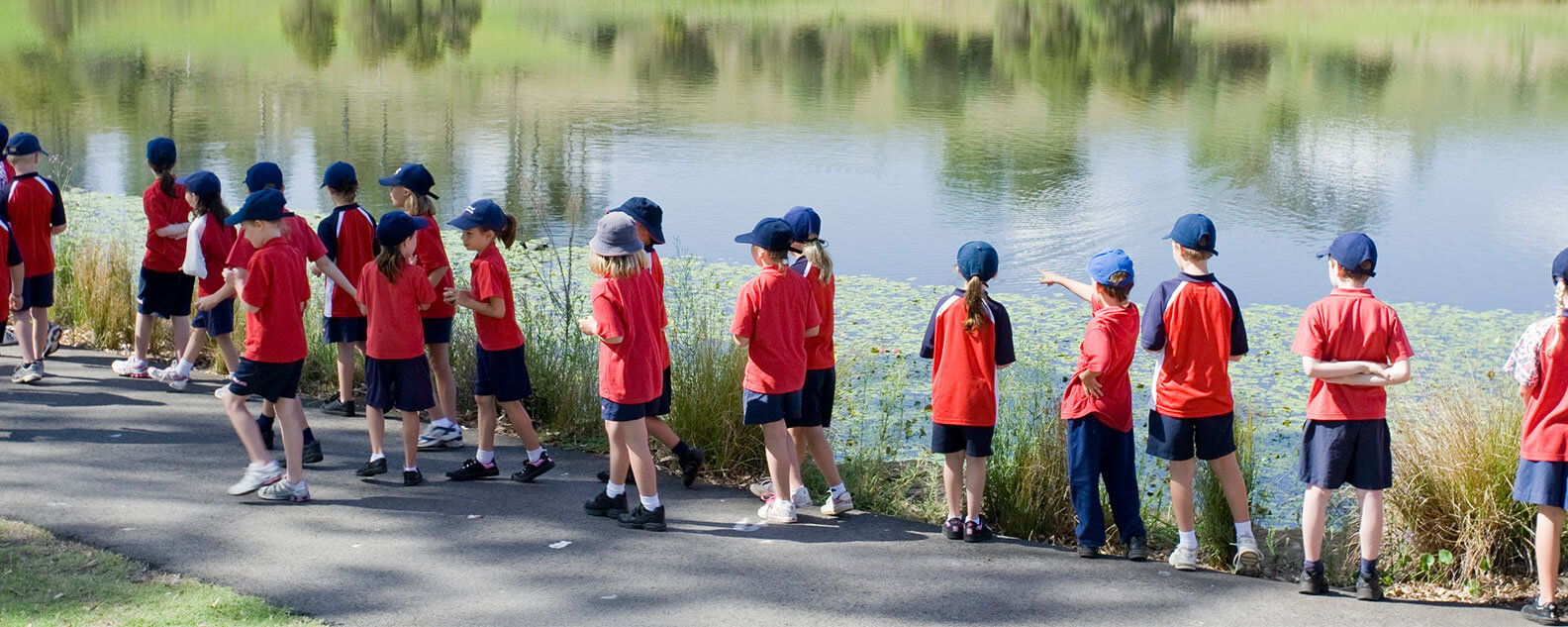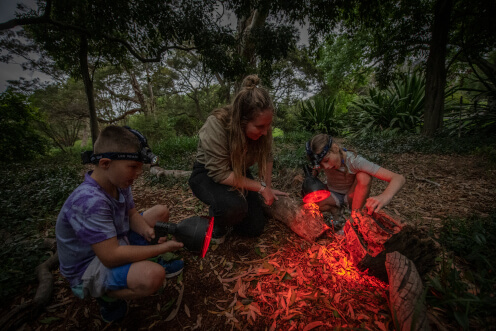Features of Places: My Botanic Garden
Investigate the natural and human features of the Botanic Gardens, identify how the gardens are used by both people and animals and the role of we can take in caring for country.

Stage 1
Geography
2 hours
Minimum charges apply. Discounts apply for full day programs!
Students will explore the best of the natural and human features of the Botanic Garden and use geographic information and tools to interpret the environment.
Students will
- Observe the natural and human features of different parts of the Garden on a guided discovery walk.
- Create an ephemeral map to interpret the features they have observed.
- Participate in a storytelling experience and discuss how to care for the natural world.
Key content
- Investigate the human and natural features of the Botanic Garden, e.g. buildings, playgrounds, garden beds, lakes and ponds.
- Observe how people use the Garden for a variety of purposes, e.g. visitors, scientists, horticulturists.
- Identify the features of places by creating and interpreting simple maps.
- Engage with storytelling to learn about how to care for local wildlife.
- Consider how people can be caretakers of their local places.
Links to New South Wales curriculum
Geography
- Describes features of places and the connections people have with places (GE1-1)
- Identifies ways in which people interact with and care for places (GE1-2)
- Communicates geographical information and uses geographical tools for inquiry (GE1-3)
"Observe the natural and human features of different parts of the Garden on a guided discovery walk."
Related excursions

Experience the Garden and its fascinating nightlife on this adventure by torchlight.

Based on Katrina Germein’s book Big Rain Coming, students will explore how First Nations people read and understand daily and seasonal weather changes and how this affects the places and environments around us.

Students will investigate a wide variety of local native plants that are integral in the life of First Nations peoples, exploring how these plants contribute to sustainability practices and the preservation of natural resources.